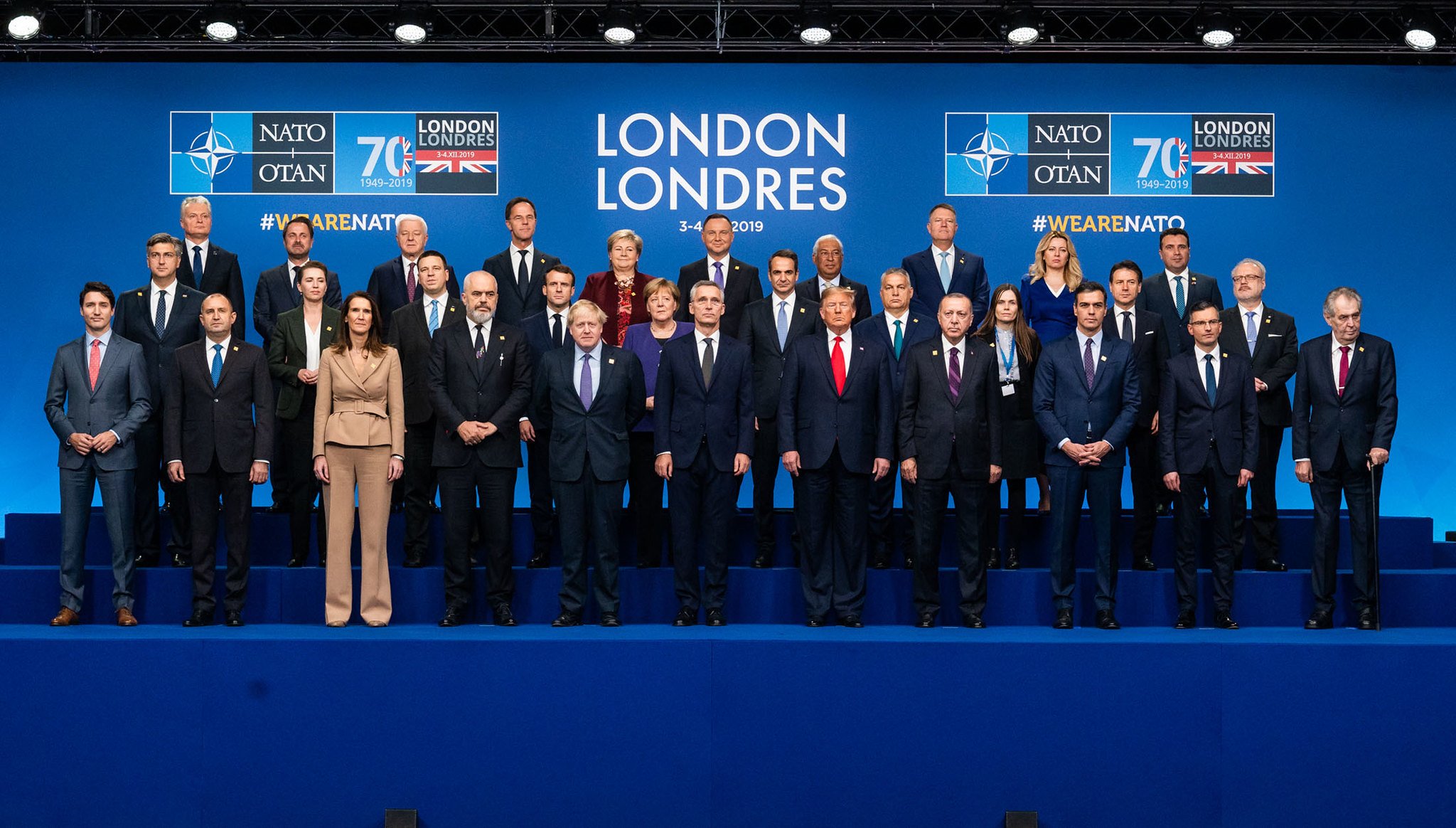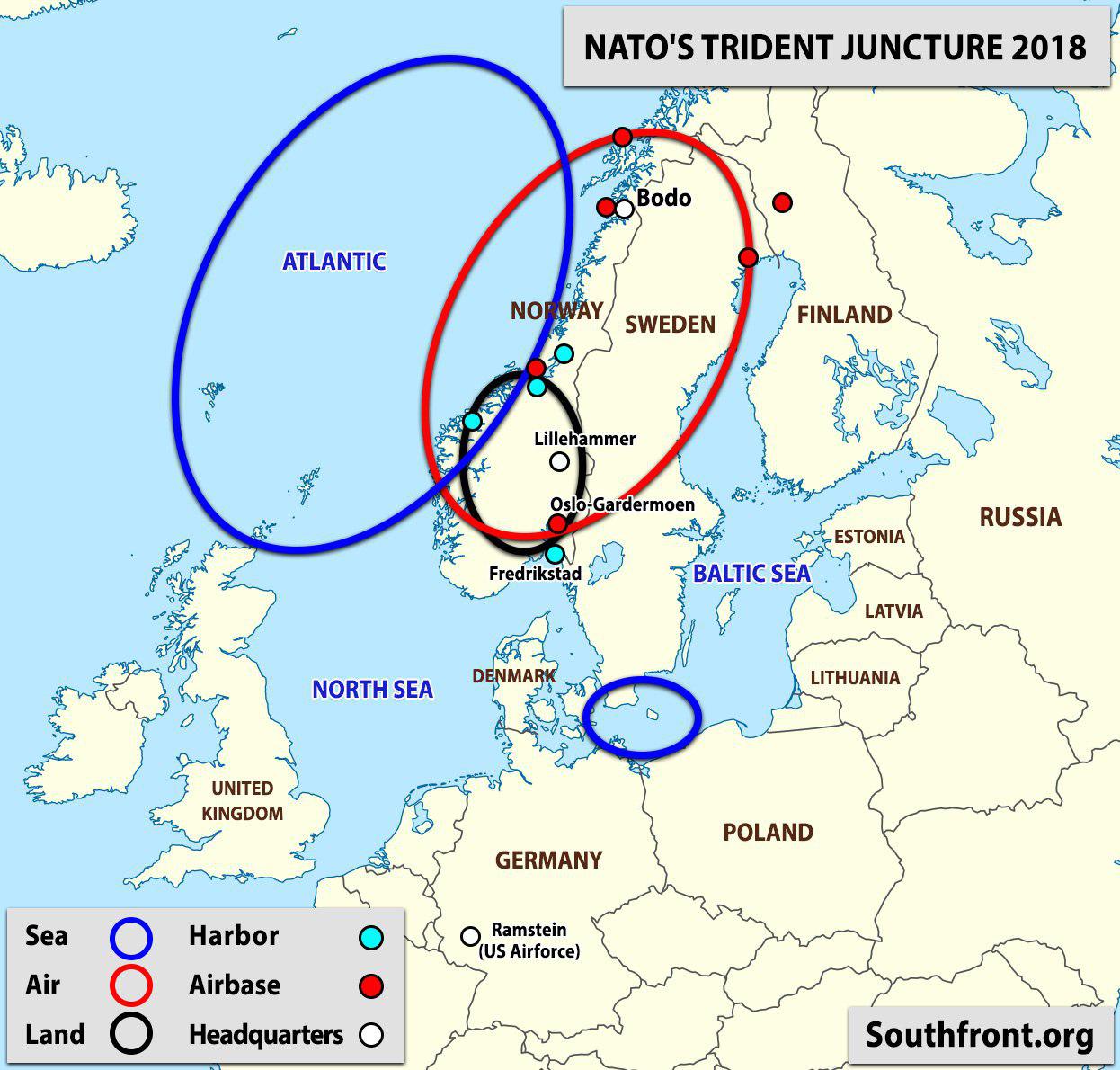On December 4th, the 2019 NATO Summit in London concluded, with little to show as a result.
It outlined what had been clear for years: the Alliance is in a sort of stalemate, with the EU and Canada losing confidence in the US and its capability, as well as unilateralism.
It is furthermore becoming more and more apparent that the nature of the military drills in the past years, as well as the upcoming ones are not as defensive in nature as the organizers would suggest.
And just a simple glance shows that the entire effort is a rather aggressive show of force and capability, since most “Key NATO exercises” both in 2018 and 2019 are US-led initiatives. Following are examples, initially from 2018, and then moving on to 2019, and finally an example of the largest exercise in 2020 – Defender 2020.
The exercises, as can be seen are primarily around the Baltic states, which is also quite “defensive”, organizing military drills on the border of the primary adversary.
- BALTOPS:S. annual maritime-led exercise, with 22 Nations (20 Allies and 2 Partners). The exercise involved more than 4700 personnel, 44 ships and submarines, and over 60 air assets. Lithuania, Poland, Denmark, Germany, Sweden took part, and it was organized entirely in the Baltic Sea. It took place between June 3rd and 15th.
- Saber Strike: Annual US-led field training exercise. This year it will include around 18,000 troops from 19 NATO nations. Estonia, Latvia, Lithuania and Poland take part, along with the US in a leadership role. It took place between June 6th and 23rd.
- Trident Juncture 2018: this was NATO’s biggest exercise in recent years. It exercised a situation in which Norway was attacked by an unnamed adversary (Russia), and it drilled the reaction to the large-scale invasion. More than 30 countries took part, the exercise trained the Very High Readiness Joint Task Force and the NATO Response Force 2019 (NRF 2019). It took place between October 25th and November 7th in Norway, the Baltic Sea and the North Atlantic. Approximately, 50,000 participants from 31 nations took part, including 10,000 vehicles, 250 aircraft and 65 vessels, in this entirely “defensive” exercise. Below is a map of the areas that the exercise took part in.
In 2019, there were several “Article 5” exercises, similar to Trident Juncture 2018.
- Ramstein Alloy 1, 2 and 3: These live Exercises all had Article 5 scenarios, with focus on the Air domain. They promoted interoperability, coordination and work with partners Finland and Sweden. They took place between April 15-17th, June 24-26th and September 17-19th, all in the Baltic States;
- Spring Storm: A large-scale live exercise of the Estonian Defence Forces, with participation from NATO’s enhanced Forward Presence and other Allied forces. Upwards of 10,000 military personnel took part. It took place between April 29th and May 10th;
- Noble Jump 19: The first, table-top phase of this exercise tested the activation, deployment planning and readiness of the Very High Readiness Joint Task Force 19. This exercise activated the overall NRF and forces moving from their home stations to their points of embarkation.
The second, live portion, starting on June 1st, tested the deployment of elements of the VJTF and the role of NATO Force Integration Units. An exercise in the land, maritime and air domains, Noble Jump tested interoperability and command and control. It took place between May 24th and June 14th in NATO’s HQs throughout, and primarily in Poland.
- BALTOPS made a return in 2019, led by the US, it took place between June 3rd and 22nd in the Baltic States and Poland;
- Saber Guardian: It was the biggest NATO exercise of the year, in Bulgaria, Romania and Hungary. Upwards of 27,000 participants took place, and it was led by US Army Europe;
- Tobruq Legacy 2019: it took place in Poland, and was focused on Surface-based Air and Missile defense, it involved 3,500 personnel from 19 countries. It should be reminded that Romania hosts the Aegis Ashore defense system, that can be easily repurposed to launch Tomahawk missiles, and Poland is to host another Aegis Ashore defense system soon;
In 2020, the Defender exercise will take place, and it will see the deployment of 20,000 US troops to Europe, in addition to approximately 17,000 troops already on the continent. It’s been compared to the “Reforger” drill from the Cold War era.
But allegedly, it’s “not a completely apt comparison” because Reforger exercises were about getting a force into one country — Germany — “to defend a very-known location against a force that we all understood very well,” Lt. Gen. Chris Cavoli, the U.S. Army Europe commander said. He recalled hearing about Reforger exercises as a little boy when his father was an Army officer serving in Europe. “The only thing we didn’t know was what time it was going to happen.”
This time, the Army must deploy a huge force onto the continent, move across and operate in many countries, “and we don’t know what we’ll have to deter or even defend against,” he said.
So despite saying it’s defensive, it’s quite offensive in its performance.
And with all of this showing of force, NATO is incapable of solve many of the problems that exist for the EU, and there appears to be very little interest in solving them, too.
Some of these issues include controlling the EU’s borders, since examples of infiltration by radical Islamists and illegal migrants are quite frequent. The EU member states are not secure from the predominant threat – the threat of terrorism, but rather all attempts are focused towards securing the eastern border against presumed Russian aggression. This issue is further underlined by the addition of China to the “nemesis” list, as another target to focus on and disregard the actual threats.
The actual “NATO forces” in conflict zones such as Syria, Afghanistan and throughout are mostly a PR stunt, the predominant forces are US troops, and if they withdraw, it would become apparent that there are, in fact, no NATO forces, but rather a slight presence that would have little to no effect on the situation.
MORE ON THE TOPIC:









NATO’s “war preparations” are further evidence the alliance is on course for another world war in Europe – nuclear war.
https://www.ghostsofhistory.wordpress.com/
It looks to me as money laundering. Huge funds were spend without a trace, so “let raise some smoke screens”